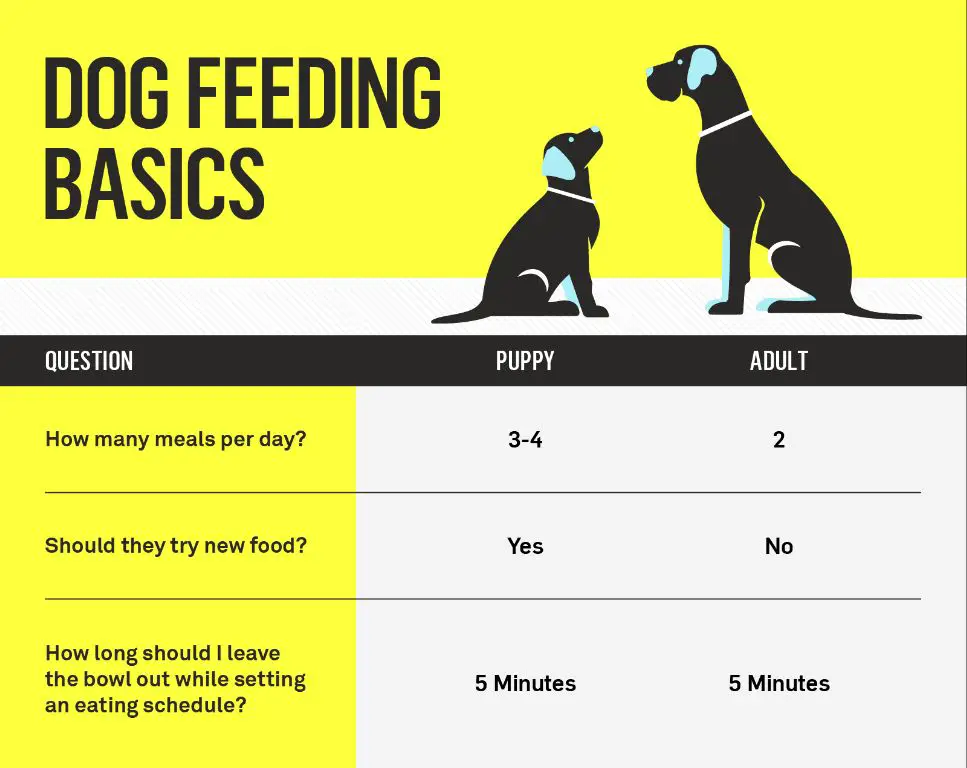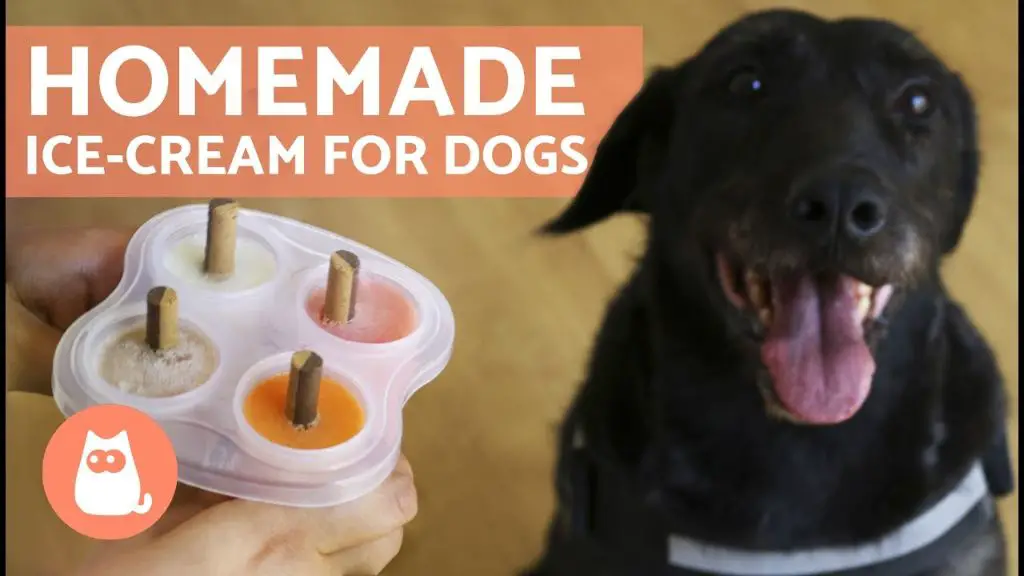Is It Okay to Give Dogs Ice Cream?
On a hot summer day, few treats seem more appealing than a refreshing bowl of ice cream. As you dig into your frozen dessert, your dog gazes longingly from across the room, hoping for a tasty lick of their own. The sight of those big puppy dog eyes is enough to make any ice cream lover wonder: Is it actually okay to share a spoonful of ice cream with your canine companion? Or should dogs be denied this timeless summer pleasure?
While the occasional small serving of plain ice cream is probably fine for most healthy adult dogs, there are some risks and precautions to consider before scooping out a bowl for your four-legged friend. In this article, we’ll explore the pros and cons of feeding dogs ice cream, from nutritional content to ingredients to avoid. We’ll provide tips on safe serving sizes, the best ice cream flavors for dogs, and even recipes for making homemade doggie frozen treats. Read on to get the scoop on whether it’s okay to give dogs ice cream.
Pros of Giving Dogs Ice Cream
One of the main benefits of giving your dog ice cream in moderation is that it’s a palatable, sweet treat that they really enjoy. After all, dogs have a sweet tooth just like humans do. Licking a cold, creamy ice cream cone or dish can be an exciting experience that brings your pet joy.
Ice cream is also an effective way to build a positive association with treats and rewards for your dog. You can use it as part of their training regimen. Your dog will be eager and motivated to listen to commands and perform tricks if they know ice cream might be their tasty payoff.
During especially hot summer weather, ice cream can help your dog cool down and feel refreshed. The cold treat helps lower their body temperature. Just be sure not to give them too much too fast, as gulping down frozen foods can sometimes cause vomiting if they eat it too quickly before it melts.

Cons of Giving Dogs Ice Cream
While ice cream can be an enjoyable treat for dogs, there are some potential downsides to keep in mind. Two main cons of feeding ice cream to dogs are the possibility of weight gain and digestive issues.
Ice cream is high in fat, sugar, and calories. Giving your dog too much ice cream on a regular basis can quickly lead to weight gain, which can cause joint problems, reduced stamina and energy levels, and more strain on the heart. Dogs that are overweight are also more prone to other health issues like diabetes and cancer.
The lactose and dairy found in ice cream may cause stomach upset, gas, bloating, diarrhea and other digestive problems in some dogs. The cold temperature and sugar alcohols in some sugar-free ice creams can also irritate the digestive tract. Portion control is key when feeding any treat to your dog, including ice cream.
While a small serving of ice cream here and there is usually fine for healthy dogs, it should be seen as an occasional treat rather than a regular part of their diet. Monitoring your dog’s weight, energy levels and stool consistency will help you determine if ice cream is problematic for your pet’s digestion or waistline.
Ingredients to Avoid
There are some ingredients commonly found in ice cream that can be toxic to dogs. The two main ingredients to avoid are chocolate and xylitol.
Chocolate contains theobromine and caffeine, which are both toxic to dogs. The darker the chocolate is, the more concentrated these substances are. Even just a few bites of milk chocolate can cause vomiting and diarrhea in dogs. Consuming larger amounts of dark chocolate can cause seizures, irregular heart rhythm, and even death.
Xylitol is an artificial sweetener used in many “sugar-free” ice creams and frozen treats. It can cause a sudden drop in blood sugar and liver failure in dogs. Even small amounts of xylitol can be dangerous, so it’s best to avoid any products containing this sweetener.
Some other ingredients like raisins, macadamia nuts, and artificial sweeteners like aspartame should also be avoided. Check the ingredients list on any ice cream before sharing with your dog.
Your safest bet is to choose plain vanilla ice cream or make your own at home, ensuring no harmful ingredients are included.
Serving Size Guidelines
When giving your dog ice cream, it’s important to stick to small serving sizes. The occasional small treat of ice cream is fine for most dogs, but large amounts can lead to stomach upsets and other issues. Some key serving size guidelines to follow include:

- For small dogs under 20 lbs, a teaspoon or two is plenty
- Medium dogs up to 50 lbs can have up to 2 tablespoons
- Large dogs over 50 lbs can have up to 1/4 cup
- Giant breeds may be able to handle up to 1/3 cup
It’s best to start with just a lick or two to see how your dog tolerates it. Introduce new treats slowly. Build up over time to the maximum serving sizes above, but do not exceed them. Too much dairy and sugar at once can cause vomiting, diarrhea, gas or even pancreatitis. It’s also smart to limit ice cream to no more than once a week or so. Like with humans, moderation is key.
Best Ice Cream Flavors for Dogs
When choosing an ice cream flavor for your dog, it’s best to stick with simple, dog-friendly flavors. Some of the best options include:
Plain Vanilla – Vanilla ice cream tends to have less added sugar and artificial ingredients compared to other flavors. The simplicity of vanilla makes it a good choice for dogs. Make sure to check the ingredients for any potential allergens.
Peanut Butter – Most dogs love the taste of peanut butter. Opt for a peanut butter ice cream made with all-natural ingredients. Make sure it doesn’t contain xylitol, an artificial sweetener that’s toxic for dogs.
Other dog-friendly flavors include plain yogurt, banana, pumpkin, and coconut. Avoid chocolate, coffee, and fruit flavors with artificial sweeteners. When in doubt, stick to simple, all-natural flavors.
Making Your Own Dog-Friendly Ice Cream
Making homemade ice cream is a great way to control the ingredients and customize flavors for your pup. Here are some simple recipes to try:

Basic Dog Ice Cream
Ingredients:
- 1 cup plain yogurt
- 1 ripe banana
- 1 tablespoon peanut butter
- 1/2 cup water or unsweetened almond milk
Instructions:
- Blend all ingredients in a food processor or blender until smooth.
- Pour into ice cube trays or popsicle molds.
- Freeze for at least 4 hours.
Pumpkin Dog Ice Cream
Ingredients:
- 1 cup pumpkin puree
- 1 banana
- 1/2 cup plain Greek yogurt
- 1/2 teaspoon cinnamon
- 1/4 cup water or unsweetened almond milk
Instructions:
- Blend all ingredients until smooth.
- Pour into ice cube trays or popsicle molds.
- Freeze for at least 4 hours.
Get creative with substitutions like using baby food instead of pumpkin, or low-fat coconut milk instead of dairy!
Storing and Serving Tips
When serving ice cream to your dog, it’s important to follow some tips for proper storage and sanitary serving:
Serve Small Portions
Only give your dog a teaspoon or two of ice cream at a time. Large portions can lead to stomach upset and diarrhea. Too much sugary, fatty food is unhealthy.
Keep It Frozen
Ice cream will melt quickly, creating a mess and allowing bacteria to grow. Store any leftovers in an airtight container in the freezer.
Prevent Messes
Give ice cream to your dog carefully, either in a bowl or on a lick mat. Supervise your dog to prevent flipped over bowls and stain-causing spills.
Following these simple tips will let your dog enjoy ice cream as an occasional treat while avoiding potential health hazards.
Signs of an Allergic Reaction
Some dogs may have an allergic reaction after eating ice cream. Signs of an allergic reaction can include:

-
Vomiting – If your dog vomits after eating ice cream, they may be allergic or intolerant to an ingredient.
-
Diarrhea – Loose stools or diarrhea can indicate an allergy. Dairy ingredients like milk and cream are common culprits.
-
Itching – Dogs may excessively lick their paws or scratch their body if having an allergic reaction. Red, irritated skin is a sign.
If your dog shows these or other worrisome symptoms after eating ice cream, discontinue feeding it to them. Consult your veterinarian if the symptoms persist or seem severe.
Conclusion
Overall, ice cream can be an occasional treat in moderation for healthy dogs, but there are some precautions to keep in mind. In small servings, ice cream likely won’t cause harm, but large amounts may lead to stomach upset, vomiting, diarrhea, or other intestinal issues. It’s important to avoid ingredients like chocolate, raisins, xylitol, or excessive sugar, as these can be toxic to dogs. The safest approach is to make your own dog-friendly ice cream or choose a high-quality store-bought option made specifically for canines. Monitor your dog after feeding ice cream and discontinue use if any concerning symptoms develop. With sensible portions and dog-safe ingredients, sharing some ice cream can be a fun way to bond with your furry friend!